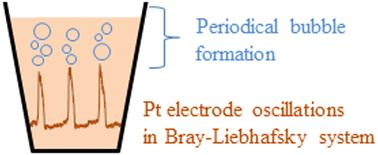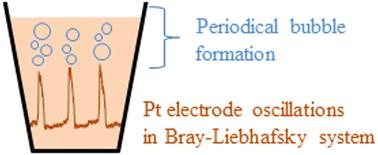答复G. Schmitz, Phys对“基于非均相效应的布雷-利卜哈夫斯基振荡反应模型的实验支持”的评论。化学。化学。理论物理。, 2025, doi: 10.1039/ d5cp00355e
IF 2.9
3区 化学
Q3 CHEMISTRY, PHYSICAL
引用次数: 0
摘要
为了理解布雷-利伯哈夫斯基振子,比较了两种概念方法。一种是基于在不考虑无情的科学约束的情况下获得良好的数值模拟,另一种是侧重于理解通过系统的能量流作为振荡行为的原因。尽管基于“能量”原理的建模并不容易,但它将为研究确定一个更独特的方向,因为能量及其变化是定义任何系统动力学的基本参数。本文章由计算机程序翻译,如有差异,请以英文原文为准。


Reply to the ‘Comment on “Experimental support for the model of Bray–Liebhafsky oscillatory reaction based on the heterogeneous effects”’ by G. Schmitz, Phys. Chem. Chem. Phys., 2025, DOI: 10.1039/D5CP00355E†
In order to understand Bray–Liebhafsky oscillator two conceptual approaches are compared. One is based on obtaining good numerical simulations without taking into concern inexorable scientific constraints, and the other is focused on understanding energy flow through the system as a cause of the oscillatory behaviour. Although modeling based on “energetic” principles will not be easier, it will define a more unique direction for investigations since energy and its changes are fundamental parameters defining the dynamics of any system.
求助全文
通过发布文献求助,成功后即可免费获取论文全文。
去求助
来源期刊

Physical Chemistry Chemical Physics
化学-物理:原子、分子和化学物理
CiteScore
5.50
自引率
9.10%
发文量
2675
审稿时长
2.0 months
期刊介绍:
Physical Chemistry Chemical Physics (PCCP) is an international journal co-owned by 19 physical chemistry and physics societies from around the world. This journal publishes original, cutting-edge research in physical chemistry, chemical physics and biophysical chemistry. To be suitable for publication in PCCP, articles must include significant innovation and/or insight into physical chemistry; this is the most important criterion that reviewers and Editors will judge against when evaluating submissions.
The journal has a broad scope and welcomes contributions spanning experiment, theory, computation and data science. Topical coverage includes spectroscopy, dynamics, kinetics, statistical mechanics, thermodynamics, electrochemistry, catalysis, surface science, quantum mechanics, quantum computing and machine learning. Interdisciplinary research areas such as polymers and soft matter, materials, nanoscience, energy, surfaces/interfaces, and biophysical chemistry are welcomed if they demonstrate significant innovation and/or insight into physical chemistry. Joined experimental/theoretical studies are particularly appreciated when complementary and based on up-to-date approaches.
 求助内容:
求助内容: 应助结果提醒方式:
应助结果提醒方式:


